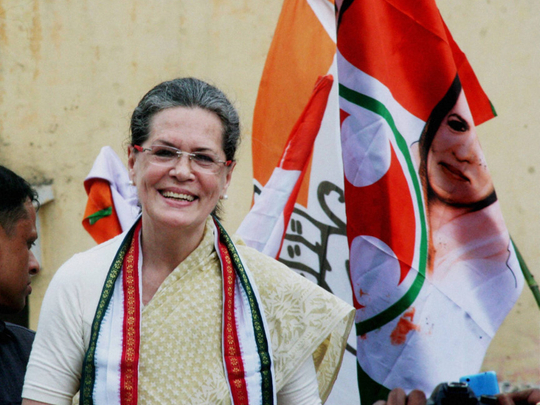
As in 2004, Congress party president Sonia Gandhi is again trying to stitch together an alliance against India’s ruling Bharatiya Janata Party (BJP). The objective is to field an opposition candidate for the election of India’s next president, where the BJP-led National Democratic Alliance (NDA) is short of a majority in the 1.1 million strong electoral college — although by no more than two per cent of the votes.
However, if the opposition fields a widely acceptable candidate and is able to lure a few of the BJP’s allies, like the generally disgruntled Shiv Sena, to its side, then the “secular” front will be able to score a morale-boosting victory.
It may be recalled that the Shiv Sena had voted against the BJP in the last two presidential elections when it supported the Congress’s Marathi nominee Pratibha Patil in 2007 against the Bhairon Singh Shekhawat of the BJP, and the Congress’ Pranab Mukherjee in 2012 against the former Lok Sabha Speaker P.A. Sangma.
Notwithstanding the Congress president’s initiative in reaching out to virtually everyone in the non-BJP camp, it will be unrealistic, however, to expect the kind of success that she had as a unifier in 2004 because there are significant differences between then and now.
In 2004, she was able to bring over to her side several of the BJP’s allies like Ram Vilas Paswan’s Lok Janshakti Party and Farooq Abdullah’s National Conference because Atal Bihari Vajpayee’s 24-party alliance was unravelling in the aftermath of the 2002 Gujarat riots. Indeed, Vajpayee later said that he would not have lost, but for the riots.
The scene is different this time. For one, unlike Vajpayee at the end of his reign, BJP stalwart and Prime Minister Narendra Modi is currently much more securely placed. For another, the Congress is now weaker than ever before.
In 2004, Congress was poised to climb higher, which it did five years later, when it won more than 200 Lok Sabha seats while the BJP was described as a “kati patang” (a floating kite) by a former minister in Vajpayee’s cabinet, Arun Shourie. Now, the sarcasm of being a floating kite applies to the Congress as its Lok Sabha tally has fallen to its lowest ever point while the BJP is soaring high.
Moreover, the fact that Sonia is having to play a proactive role despite her failing health shows that Congress vice-president Rahul Gandhi, who has long been expected to replace her as the party president, has failed to fulfil the Congress’s expectations of becoming an acclaimed leader with ideas and energy. Instead, Rahul remains something of a part-timer in politics. Sonia, too, has lost some of the lustre that she had a decade ago because her missteps during the Congress’s stint in power, such as stalling the economic reforms in favour of populism, are widely believed to have led the party to its doom.
Former finance minister P. Chidambaram has subsequently admitted that the Manmohan Singh government made the mistake of taking the “foot off the accelerator of reforms”.
Given this background of failure, it will be difficult for Sonia to promise a new dawn in the company of losers like Sharad Pawar of the Nationalist Congress Party, Mulayam Singh Yadav of the Samajwadi Party and M.K. Stalin of the Dravida Munnetra Kazhagam. Besides, it is difficult to see how disparate groups like Laloo Prasad Yadav’s Rashtriya Janata Dal (RJD), Mamata Banerjee’s Trinamool Congress, Mayawati’s Bahujan Samaj Party, National Conference and Sitaram Yechury’s CPI-M will be able to act like a coherent political formation. Needless to say, there is nothing to bind these parties in terms of ideology except their dislike of the BJP.
It will be instructive to recall how an attempt to constitute a Janata “parivar” (family) comprising the Samajwadi Party, the Janata Dal-United (JDU), the Janata Dal-Secular and the Indian National Lok Dal fell apart even before it could be formed.
True, a mahagathbandhan or a grand alliance made up of the RJD, the JDU and Congress, among others, proved to be an electoral success in the Bihar state elections in 2015. But a similar attempt came a cropper in Uttar Pradesh this year, showing that such opportunistic combinations are not easy to put together.
Even if, for argument’s sake, Sonia’s attempt to set up an alliance does succeed, who will be its leader? The Congress president herself can be ruled out because of her health and the “foreign origin” stigma, while none of the others, whether Pawar or Mulayam, is a person who can match Modi’s popularity. The innate distrust between these parties is also likely to come in the way of proposing an agreed name for the president’s post.
It will not be too far off the mark to suggest, therefore, that the opposition parties in India are chasing a mirage.
— IANS
Amulya Ganguli is a political analyst.










